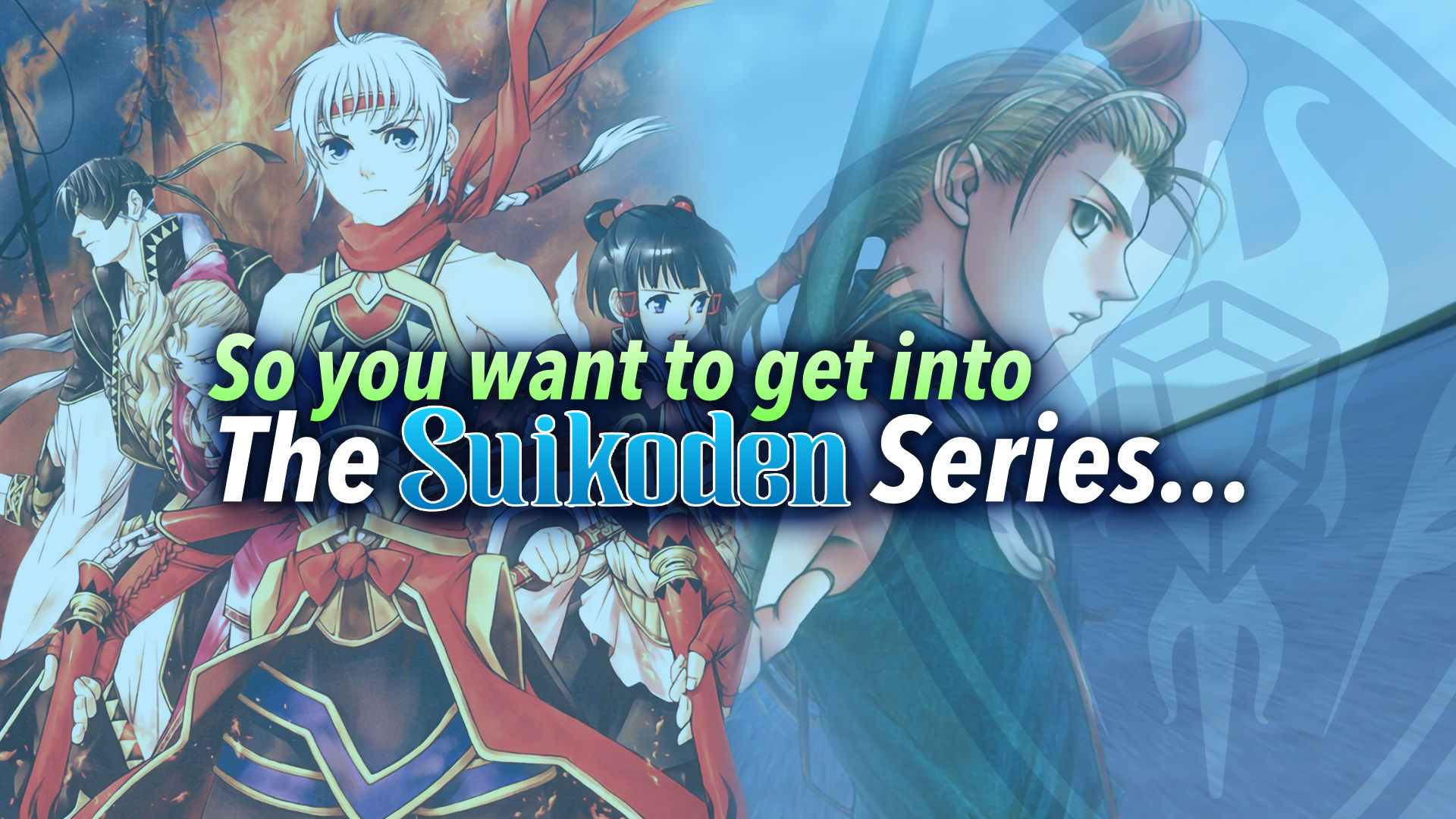Suikoden is an oddity. You may see a game from the series pop up on a “Best RPGs of All Time” list, you might hear other fans speak of it lovingly, but nailing down exactly what makes the series so beloved feels like trying to hit a moving target. Some insist it’s all about worldbuilding, creating a sprawling, interconnected universe. Some swear by the enormous cast of characters. Others have latched onto one of a dozen unique gameplay mechanics, from full-scale wars to intimate duels, from castle building to Iron Chef-style cooking competitions. The series has a reliable structure, except when a game comes along that throws half of it out the window.
Suffice to say, the series does a lot. And for the most part, it does it all really well.
But it’s always hard to find a way into a dense series, and that’s why we’re here. There’s an easy, linear answer to how to dive into the Suikoden series, but it’s not the only way to experience it. Some games are better with a bit of knowledge up front. Some might not appeal to every player. But above all, the Suikoden series covers a vast span of time throughout a dizzying number of countries in an enormous, unified world. Figuring out how the pieces fit together is a job in itself. Whether you’re a newcomer or a vet, there’s always some new corner of this venerable series to explore.
And things are better than ever. With the announcement of remasters of the first two games, there’s no better time to dive into the series!
Suikoden Basics
Before we dive in, let’s try to answer that trickiest of questions: how do you pronounce Suikoden? Wait, wrong question (it’s swee-koh-den, if you were wondering—and I know you were). Well, let’s try the second trickiest question: what makes a Suikoden game so great? Suikoden games are dense with staple mechanics and story elements, and a lot of them have evolved over the years, but we can boil the core of a Suikoden game down to just a few common features.
The World
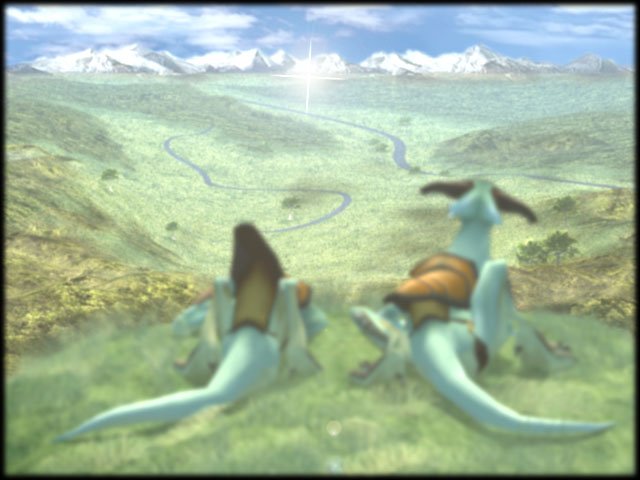
The core Suikoden series takes place on the same unnamed world, with games covering a handful of continents over a timespan of nearly 200 years. Not content to offer self-contained stories with a handful of shared characters or themes, the Suikoden games are an interconnected web of politics, wars, and high magic that unites the series’ disparate stories into a cohesive view of an evolving world. This allows long-time fans to enjoy cameos and world events that hit harder with the benefit of experience, but it gets a little bit more complex as the series jumps back and forth in time. You grow to love characters in one game only to see them living an entirely different life years in the past in subsequent games. It’s a satisfying, if confusing, world that rewards you the more you get into it. But it’s not all politically driven, world-changing events. Arguably the most noteworthy elements in Suikoden’s story are the supernatural ones.
The 108 Stars of Destiny
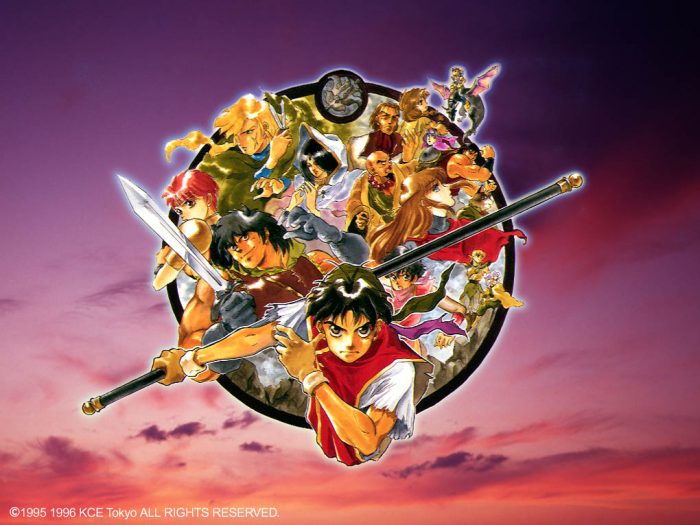
You rarely see someone mention Suikoden without also calling out the enormous cast of characters. Each of the core games boasts 108 or more recruitable or otherwise noteworthy characters, pulling an impressive collection of destined characters together to face a world-level threat. Drawing inspiration from one of China’s great pieces of classical literature, Shui Hu Zhuan or Water Margin, the number 108 is an important figure consistently referenced in the narrative. Recruiting the entire cast often leads to a true ending or bonus events near the finale of each game, but the daunting number of characters is less cumbersome than you’d expect. For instance, around a quarter of the cast handles tasks outside of battle, like building up your castle base or offering passive bonuses. The story also usually focuses on a subset of the cast but allows experimentation by giving the player large parties of up to six active party members. While fan favorites emerge based on interesting sub-stories, cool designs, or battle utility, the focus is always on characters wielding powerful artifacts called True Runes.
The 27 True Runes
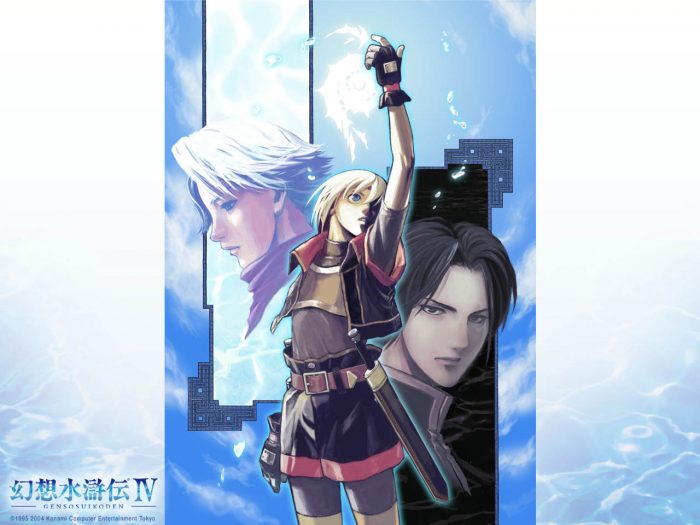
Magic in the Suikoden universe is powered by magical equipment called Runes, fragments of power capable of calling upon spells both powerful and mundane. However, these all pale in comparison to the 27 True Runes born during the creation of the Suikoden universe. These runes act as sentient deities of a sort, and the appearance of a True Rune marks a significant, world-level event. Representing a primal force in the universe, these runes inexorably attach to a person—often a main character—and set them on a path, often affecting their psyche in some way or even granting them some kind of supernatural lifespan or abilities. The True Runes motivate the events of the Suikoden series, and uncovering new True Runes and their effects (and speculating on ones yet to be revealed) is a beloved pastime of Suikoden fans everywhere.
The Gameplay Buffet
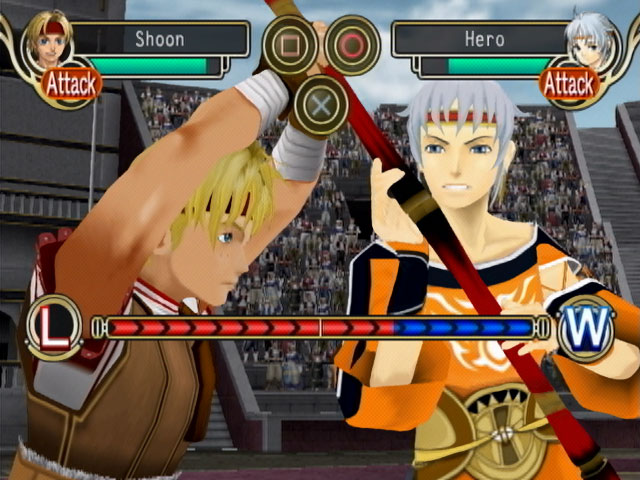
Of course, if you’ve heard of Suikoden, you’ve heard of a half dozen gameplay types. Traditional RPG battles, one on one duels, massive tactical battles, card games, dice games, castle building, cooking battles, and more are present in some or all games in the series. Perhaps the most impressive part of the series is pulling all of these disparate types of gameplay into one cohesive whole, with mechanics of one gameplay type constantly feeding into several others. While listing everything could be a feature on its own, it’s worth highlighting the heavy hitters.
- Traditional RPG – The core of Suikoden is a traditional RPG with turn-based battles, world exploration, NPC interaction, level- and equipment-based progression, all the hallmarks you expect. However, due to the number of characters at play, Suikoden pulls many tricks to keep things manageable. Slingshot XP for low-level characters, battles where multiple party members act concurrently, and streamlined equipment upgrades all feed into a tighter experience.
- Tactical Battles – The core series always features some kind of tactical battle where you utilize a collection of your 108 Stars of Destiny beyond your usual party and engage in large-scale combat. While the specific mechanics vary from game to game, these always aim to give utility to your entire roster, with levels earned in the core loop often feeding into your units’ efficacy. Oh, and sometimes your precious Stars of Destiny can permanently die as a result of these battles so… be careful!
- Duels – When a big, character-defining fight pops up, Suikoden might throw a duel at you. Functioning on a kind of rock-paper-scissors system with your opponents hinting at their plans each round, duels offer more dynamic camera angles and some serious emotional payoff.
- Home base – What good are 108 Stars of Destiny without a place to keep them? Suikoden games give you a castle or home base where all your recruited characters spend their time when they’re not in your party, but it’s more than that. These bases grow as you recruit more characters, adding new elements like shops or elevators to make your castle just a little more essential. Watching a small home grow throughout the game is a core part of the Suikoden experience.
Of course, each game has its own quirks. Some are beloved by the community, some…less so. While the simple path is to play the series in order, you might be wondering what to expect in each game, or you might want to go wildcard and do something wacky like playing in chronological order. Either way, we’ve got a breakdown for every game in the series. Buckle in. This one’s gonna take a bit.
Suikoden
1996 – PS1, PS1 Classics on PSN
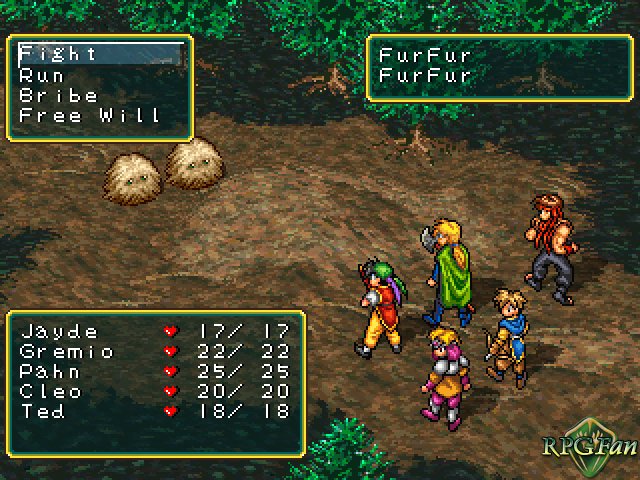
What it’s like
The game that started it all has a simple RPG core: 2D graphics, turn-based battles, random encounters, and a sufficiently large world to explore. But the unique elements of the series are already in play here, with differing levels of success. You take a colorful cast in your party of 6, using magic runes (including this entry’s featured True Rune, the Soul Eater) and bombastic multi-character unite attacks to spice up the fast-paced battles. You’ll grow a castle with your army of 108 Stars of Destiny, you’ll engage in dramatic one-on-one duels, and you’ll get your first exposure to Suikoden’s larger world.
How it fits in
Suikoden is a simpler, more straightforward story than the stories in later games. You assume the role of the son of the Scarlet Moon Empire’s General, Teo McDohl. As the hero begins a career in the imperial army, well gosh dang it, it turns out the empire just isn’t as friendly as you might expect. Who could have called it? Before long, you’re swooped up by a liberation movement and building up an army to take down a corrupt empire. While the broad strokes will be familiar to any RPG fan, the devil is in the details here. Seeing how specific towns suffer under imperial control and how different characters shift allegiances to join either your army or the empire’s (and sometimes, switching back again) is where the real meat of the story lives. Bolstering the setup is the hero unwittingly coming into possession of the Soul Eater, a cursed True Rune with power over life and death that grants immortality to its wielder. This rune drives the hero into increasingly dangerous and lethal situations, settling an aura of danger over the entire experience.
Suikoden isn’t the first game in the series chronology, but it kicks off the linear events of the first three games. Characters in Suikoden play a huge role in Suikoden II, and a handful of them make returns quite a few years later in Suikoden III. Suikoden establishes the setting in general terms, and this entry only hints at the idea of a larger world outside the immediate environment and events.
Why you might love it
As the first game in the series, Suikoden has the hallmarks that future games would carry forward. All of those unique elements come in a tighter package than future games, as it’s possible to see everything the game has to offer in under 30 hours. Characters introduced in this game come back in a big way in future installments, allowing the serotonin kick of recognizing all the returning favorites down the line. Suikoden also makes it easy to manage the extensive cast of characters, with low-level characters getting extremely quick experience growth to catch up to their peers, and streamlined upgrades. Each character has their own unique weapon with a linear upgrade path. If this is the first Suikoden game you play, most of the unique elements will still feel unique over 20 years later, with the sheer breadth of intermingling gameplay styles remaining a balancing act few games attempt to emulate.
Why you might not
Suikoden is the oldest game in the series, and you can feel it. Character animations are stiff, the story veers into over-simplicity at times, and some elements (especially the war battles) feel like prototypes. Suikoden, both the first game and the series at large to a degree, is also the kind of game that begs you to keep a guide open at all times. Recruiting all 108 Stars of Destiny isn’t always straightforward, with some characters being easy to miss permanently. And this might not just be an issue for completionists. Collecting all 108 Stars of Destiny is required for the best ending, and it’s hard not to feel like you’ve missed out if you reach the end of the game and found you only missed a handful. Suikoden is a lovely time if it’s your first game in the series, but if you have less patience for archaic design, it can feel like a bit of a barrier on the way to some of the fan favorites—especially Suikoden II.
Suikoden II
1999 – PS1, PS1 Classics on PSN
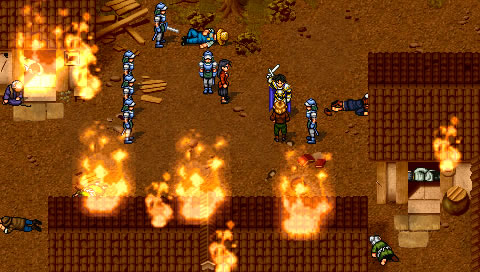
What it’s like
Suikoden II takes the core of the original and just does it all better. More dynamic animations, more distinctive characters, a significantly stronger focus on the story, more unique side quests, more fleshed-out characters (including quite a few returning from the first game), and a stirring soundtrack all combine to make perhaps the most beloved game in the series. Suikoden II is generally regarded as the apex of what all other Suikoden games should aspire to, solidifying and strengthening all the elements the original game had just started experimenting with. Fans of the original can carry their save into Suikoden II for some additional cameos, depending on whether you recruited all 108 Stars of Destiny the first time around.
How it fits in
A mere three years after the original, Suikoden II moves us a bit farther north on the northern continent of the Suikoden world to deal with another evil empire threatening the area. This time around, however, the “empire” in question, the Highland Kingdom, hits harder. You see the first-hand devastation the nation unleashes on its neighbors, especially through its most prominent representative—fan-favorite villain Luca Blight. A special kind of madman in power, Luca gives the Suikoden series one of its most hateable villains. This sadistic prince kicks off the hero’s path, instigating a slaughter of the main character’s youth brigade camp for political gain, leaving few survivors. As is tradition, the hero becomes entwined with a True Rune (the Bright Shield Rune this time, one half of the True Rune in question, the Rune of Beginning), setting him on a complicated path with the wielder of the Black Sword Rune. It’s not long before you join up with some familiar characters from the first game who can’t seem to stop challenging evil empires, kicking off a complex political and mystical tale as you combat the evil empire and sinister parties pulling the strings. While Suikoden sets up the world, Suikoden II sets out to ensure events keep the state of the world ever-evolving.
Why you might love it
Suikoden II is everything Suikoden wanted to be. The game is prettier, the plot is denser, and the experiments have started to pay off. The simple rock-paper-scissors mechanics of the original game’s wars have been made more tactical and complex. Your army feels more like a force in the world. The 108 Stars of Destiny pop with bright personalities. And the mystical world opens up, shining a light on how the True Runes play into the world and what it means to be a steward of these all-powerful artifacts. Suikoden II is a bit heftier, landing closer to the 50-hour mark, but there isn’t a dull moment in the bunch. Suikoden II is the beloved classic of the series. If you ask ten series fans which game you must play, nine of them are going to point you at Suikoden II.
Why you might not
To be perfectly honest, Suikoden might just not be for you.
Okay, that’s not entirely fair. Suikoden II isn’t without its faults. The translation has some issues, with some questionable wording and the occasional garbled text sneaking into the final product. Despite improvements, the war battles can still feel like a hurdle, with the potential for the permanent loss of one of your Stars of Destiny often demanding an instant reset. Character recruitment can be difficult without a guide, with recruitment and sidequests being missable throughout the game (including one side quest that’s tied to your in-game timer without any warning). Full recruitment of all Stars of Destiny still affects the game’s ending, further incentivizing completionists to scour the entire world after every major game event.
Suikoden III
2002 – PS2, PS2 Classics on PSN
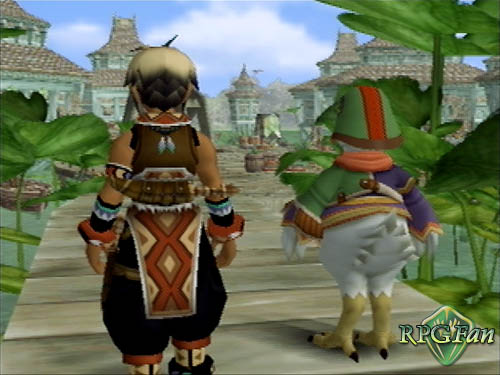
What it’s like
Alright, now it’s time to get weird.
Suikoden III was recently called “the most PS2-ass PS2 game” Michael Sollosi of Retro Encounter fame has played, and that’s accurate for both good and ill. Wild experimentation marked the PS2 era: developers felt empowered to try new things after the technical limitations of creating 3D games on weaker consoles like the PS1 were lifted. This led to a lot of games that missed about as much as they hit, leaving us with a generation of divisive cult classics.
Suikoden III certainly fits this mold. It marks the first significant change to the battle system of the series, with your six-person party split into pairs that act together. Character progression gets far more complex, with the value of investing in specific skills not immediately obvious. It might be hours before you realize that investing in the Swing skill is mandatory for success after the first few hours, and figuring out which skills make certain characters particularly useful starts out as a bit of a guessing game. It’s a wholly unique entry into the series, and you can read into that however you so choose.
How it fits in
Set around 16 years after Suikoden II, Suikoden III is the most recent game in the Suikoden timeline to date. The story moves north once again, this time to the Grasslands region mentioned in Suikoden II. Suikoden III also changes up the setting a bit, as the Grasslands are home to several tribal cultures, leading to both smaller, more intimate settlements and clashes with more industrial nations. The larger gap between the previous game and this one means the pre-existing characters we meet have changed a lot. Children are now grizzled veterans, we meet the offspring of a handful of old favorites, and allegiances change as old friends and foes swap places and give a glimpse of old hatreds from the other side of the fence.
This also marks the biggest impact the player can have on the Suikoden universe, thanks to the trinity sight system. Suikoden III introduces not one but three protagonists, whose stories progress in parallel for several chapters before the player selects one true main character (which grants them access to the game’s primary True Rune, the True Fire Rune). Suikoden III doesn’t stop there, with quite a few more True Runes popping up over the course of the game. Seeing the game from three perspectives—a Grassland teen, a Zexan knight, and a Harmonian mercenary group—gives us the most robust view of political events in a Suikoden game to this point. Its focus on “more” wherever possible gives Suikoden III a unique feel within the series.
Why you might love it
If you’re hungry for highly experimental games and PS2-era JRPG sensibilities, Suikoden III is a feast. The story is dense and unique, with the varied perspectives giving you completely different views of related events throughout the story’s beginning. The combat and character progression are lovingly breakable, giving savvy (or guide-wielding) players the ability to really pump up their team and execute some very satisfying strategies. The war battles have seen another improvement, feeling the most comprehensible and integrated with the rest of the game they have to this point. But mostly, if you’re really into Suikoden III, the story is likely to take center stage. The cast is filled with affectionate callbacks to the last two games, and the core plot rewards long-term investment in the world. The climactic moments of the story (and the reward for obtaining all 108 Stars of Destiny) are gasp-inducing, and the sheer uniqueness of Suikoden III make it something to experience, one way or another.
Also, the opening theme is an absolute banger, and the game includes anthropomorphic ducks with cool names like “Sgt. Joe.” You can ignore the entire next section with these selling points firm in hand.
Why you might not
Alright, I’m a bit of a Suikoden III apologist, but I can’t pretend everyone who reads this is gonna fall in love. Perhaps the severest loss in the transition from Suikoden II to Suikoden III is pacing. The transition to 3D left animations a lot more sluggish than before, and the battles are filled with lengthy movement animations that can leave you snoozing in the middle of a string of random encounters. Backtracking through areas is the name of the game, as the world map eschews an open map for an interconnected series of nodes (a la Super Mario World) that require traveling through each area you pass through on foot. There is a patch of empty grassland you will grow to know all too well. The new battle system is packed with wonderful ideas, but they all feel just a little underbaked. Ultimately, Suikoden III is a grand experiment, and it misses as much as it hits. Your patience for the failures will determine how well you can push through to the true successes underneath.
Suikoden IV
2005 – PS2, PS2 Classics on PSN
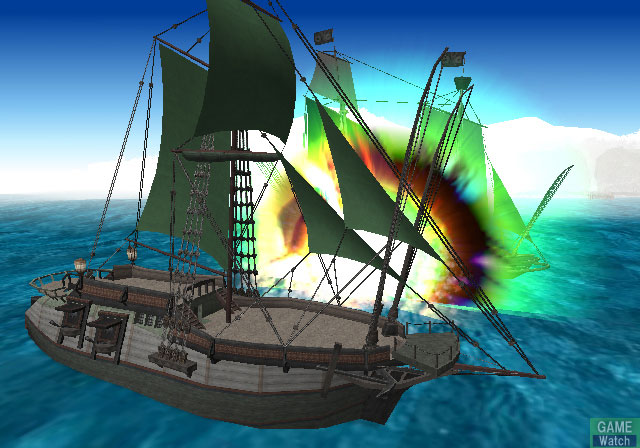
What it’s like
It would have been easy to call Suikoden III the black sheep in the series, but that’d be disingenuous when we have Suikoden IV.
Suikoden IV is the first game in the series without longtime director Yoshitaka Murayama at the helm (while he left Konami just before Suikoden III’s release, he oversaw most of the development before parting ways) and you can feel the growing pains throughout the game. In some ways, the series continued to evolve. This entry introduced voice acting for the first time in the series, as well as introducing sailing for a more seafaring journey. Steps were also made to increase the pace of battle after the brakes were applied in Suikoden III. But the game went backward in as many ways as it went forward, and a number of those steps forward would prove missteps with fans and newcomers alike.
How it fits in
Suikoden IV throws us far into the past, 150 years before the original Suikoden. In most respects, this distances the game from what came before and aspires to provide a clean entry point for newcomers. While there are a small handful of characters who can reappear over such a long stretch of time, this gap ensures that the events and characters of previous games are mostly absent. This time around, our focal True Rune is the Rune of Punishment, a terrifying rune that feeds off its wielder. We also move south for the first time in the series, abandoning the northern continent for the open ocean and a series of islands known as the Island Nations Federation. While the Island Nations have been mentioned in previous Suikoden games, this is the first time we see it in person, opting to sail open waters rather than exploring an overland world map.
Why you might love it
If you’re going to connect with anything in Suikoden IV, it’s likely to be those members of the cast who get focus. While much of the cast is more disposable than in previous entries, the main cast has satisfying arcs. This is most true for Snowe, the hero’s friend and an entitled noble who grows in satisfying ways over the game’s duration. Battles are sped up, partially due to dropping the party size down to four, partially by simply ramping up animation speeds. War battles are replaced by naval battles, an interesting twist on the formula pioneered in the original Suikoden. They’re some of the more entertaining variants on the formula in the series.
Why you might not
Okay, so Suikoden IV is short, but it doesn’t always feel short. Sailing is terribly slow, with constant random encounters and few landmarks to break up the uninterrupted view of empty sea. The ship always feels slow, invisible walls bring you into a painfully sluggish animation to drag you back into the map, and sailing is such a large part of the game that you’re likely to remember the boat times more than any other experience. The rest of the game can also feel regressive. Dropping the party down to four party members speeds things up, but it also means you get to use even less of the expansive cast of any Suikoden game. The game has been scaled back mechanically since Suikoden III as well, not just simplifying back to a more straightforward turn-based system but also abandoning the more interesting elements, like the skill-based progression system. And while there are a few breakout characters and a small handful of interesting cameos, the story never seems to fully kick into gear. Villain motivations are vague, plot points are spaced between interminable sailing sections, animation is stiff, and colors are muted. There’s not much to latch onto in Suikoden IV, and the strength of the Suikoden brand can only go so far.
Suikoden V
2006 – PS2
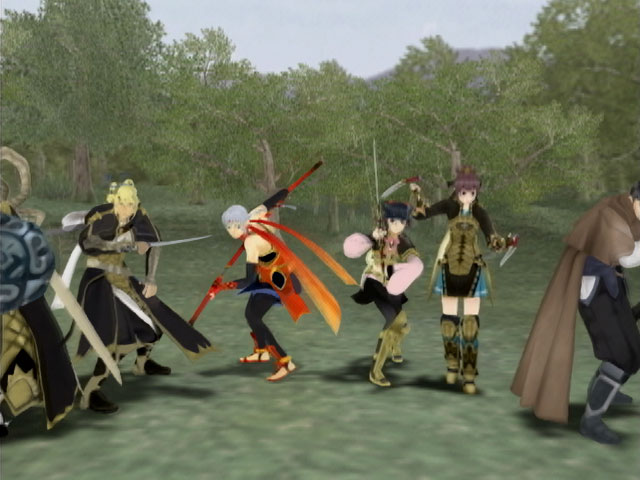
What it’s like
Konami seemed to take the criticisms of Suikoden IV (and Suikoden III) to heart, as Suikoden V acts as something of a return to form for the series. Taking its cues from the first two games in the series and updating those core mechanics for the PS2, Suikoden V saw positive reviews and a lot of fan love that persists to this day. Party size grew back to six, with the snappy animations of the past making a comeback. The game is bright and colorful, with plenty of ties to the early games in the series in a visually distinct setting. Suikoden V takes the Dragon Quest approach to sequels, evolving in the details but keeping the vital core of the early series alive and well.
How it fits in
After Suikoden IV’s side trip into the distant past, we’re back in more modern history with Suikoden V taking place just eight years before the original game. The doors are opened for cameos and recurring characters, with several minor characters from earlier in the series taking a central spot in the story this go-round. The Queendom of Falena, the primary setting for Suikoden V, moves us south once more to the Southern Continent beneath the Island Nations of Suikoden IV. This country is governed on the authority of the Sun Rune, this entry’s premier True Rune. Like Suikoden II, your hero doesn’t wield the True Rune itself, instead holding one of two child runes called the Dawn Rune. The hero is also a bit closer to the political intrigue this time around, as the prince of Falena who must deal with the actions of his mother and the queendom at large.
Why you might love it
Suikoden V feels like a direct follow up to Suikoden II. If you loved the first couple games in the series, there is plenty to love here. But the game doesn’t just rest on its laurels. A fresh iteration on Suikoden III’s skill system appears again, but this time it’s a bit simpler and easier to wrap your head around. Your party of six can now orient in a number of different formations, granting stat buffs and special abilities based on the formation used and the placement of characters within it. War battles are a bit more fast-paced, more akin to a real-time strategy game than a turn-based one, and ships join together with land battles to unite some of the best parts of previous games. The story is also a good shot in the arm for the series, returning to the wealth of pre-existing characters (this time seeing where they were before the original games instead of after) and a more personal tale that still functions on a country-wide scale. The core cast gets a lot more focus than in previous games, allowing you to really get to know your Falenan neighbors.
Ultimately, Suikoden V is beloved because it’s a return to form. Whether it’s your first Suikoden game or you’re playing in order, you’ll get a good feel for why the series is so beloved.
Why you might not
Suikoden V doesn’t get a lot of criticism for its design. Five games into the series, Suikoden V finds its footing and leans heavily on the fan-favorite elements. Where Suikoden V trips up is pacing. Once the story gets going, it really gets going, but you can expect several hours of slow-paced introduction before you reach that point. Between glacial introductions to the core cast and enormous areas to explore, there’s quite the trek between starting the game and the game actually starting. But the story is not the worst part when it comes to pacing. As is tradition, there are plenty of random encounters, and once you’re into those encounters they can move pretty quickly. Unfortunately, the game cannot keep up, and you’ll find yourself in 5-10 second load times before each one, another five or so after each one, and equal load times when moving between areas. With such large, maze-like towns and dungeons, you’ll hit these load times often enough that those seconds really add up and affect how long exploration feels like it’s taking. Most fans find that the game is worth the wait, but getting to the point of realizing that fact is an uphill climb.
Suikoden Spinoffs
Suikoden has seen a decent level of success. While not enough to carry the game long past the end of the PS2 era, the games have seen a wealth of spinoffs. Most of these never left Japan, but English-speaking audiences got a handful, and a handful more have accessible translations. We’ll shoot through what these are pretty quickly, as they’re a mix of canon and non-canon, but if you start the main series and absolutely love it, you’ll have plenty more to dig into.
Suikogaiden
2000 – PS1 – JP only
The Suikogaiden series includes two visual novels (Swordsman of Harmonia and Duel at Crystal Valley) that intersect primarily with Suikoden II and flesh out the world while setting up the future of the series in Suikoden III. These games are canon and even introduce a few characters that would become important later in the series, but visual novels were not a popular enough genre for a release outside of Japan back in the early aughts. They’re beloved by fans, but not the most accessible games.
Suikoden Card Stories
2001 – GBA – JP only
Suikoden Card Stories is a fun little card game that retells the story of Suikoden II with a handful of changes to how events shake out. The core of the game involves using a huge collection of character cards to complete missions, competing against your opponent to put forth the best team while still holding onto enough powerful units to take the next one. It’s an interesting take, but definitively a spinoff with more focus on playful card battles than telling a story.
Suikoden Tactics
2005 – PS2
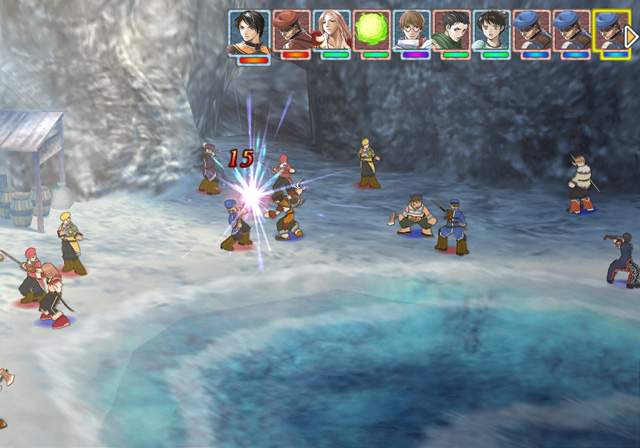
Now we’re talkin’! A tactics spinoff from Suikoden IV that’s both canon and saw an English release, Suikoden Tactics is a rare treat, in its role as a canonical spin-off if not in actually playing the game. Taking place before Suikoden IV starts and ending after the events of that game, Suikoden Tactics is a canon entry that seeks to flesh out some of the lighter story elements of Suikoden IV. While it’s a passable entry, it failed to set the world on fire, seen as a slightly lesser version of more popular tactics games. But hey, if you want a canon spinoff to the Suikoden series with an official English release, this is all you’ve got.
Suikoden Tierkreis
2009 – DS
We did get one more spinoff localized in English, though it was a bit of an odd duck. Canon only insofar as a multiverse has been hinted at in the Suikoden series before and Suikoden Tierkreis takes place within it, we’re sent to a brand new world with no recurring characters. Leaning more toward a traditional fantasy story than the political mysticism of the canon series, Tierkreis is noteworthy for its lighter tone and its strange, fast-forwarded vocal lines for the main character. The game is a solid enough handheld RPG for the time, but its ties to the core series are tangential at best.
Suikoden: The Woven Web of a Century
2012 – PSP – JP only
The most recent game in the series never made it over in English, potentially due to its release toward the flagging end of the PSP era when the Vita was the Next Big Thing. Suikoden: Woven Web of the Century is another parallel world RPG taking place in Suikoden’s greater multiverse, throwing out another more traditional RPG story with a dash of time traveling and a new-to-the-series job system. The game fared pretty well with reviewers in Japan, but the series has been in hibernation ever since.
That’s cool and all, but where should I start?
Oh, that’s easy. Just play the games in order. While the story isn’t told in chronological order throughout, reveals in later games rely on knowledge of previous ones, even if they take place earlier in the timeline. But while there’s an obvious path to take in playing Suikoden I-V in order, it’s not the only path. While the world interweaves in lovely ways, the story of each game can stand alone strongly enough that you won’t be lost if you dive into any given entry.
If you’re feeling uneasy about going back in time as far as the original game, your next best bet is Suikoden V. It gets you a more modern take on the core gameplay, but without the tighter ties Suikoden II holds to the prior game. The pacing takes a bit of patience to break through, but you’ll be rewarded with everything fans love about the series.
If you’re looking for first games to avoid, steer clear of III and IV. While both have their fans, they are experimental enough that they won’t give you the best view of what the series is like. They’re worth diving into after you have one or two games under your belt.
You’ll note I didn’t mention Suikoden II, despite its reputation as the best in the series. You can comfortably start with it and will be able to follow the plot, but you’ll miss out on the consistent callbacks to the first game and a couple very neat rewards for transferring your completed save data from the first game to the second. You’ll technically be fine playing Suikoden II first, but trust me—it’s worth playing the breezy first game before you do.
The future of the series
We haven’t seen a new Suikoden game in 9 years, and there’s no evidence of any more coming along. But that doesn’t mean there’s not plenty of reason to play this excellent series. Aside from the fact that they’re some of the greatest RPGs of all time, the original director of the series has decided that he’s not ready to let the idea go just yet.
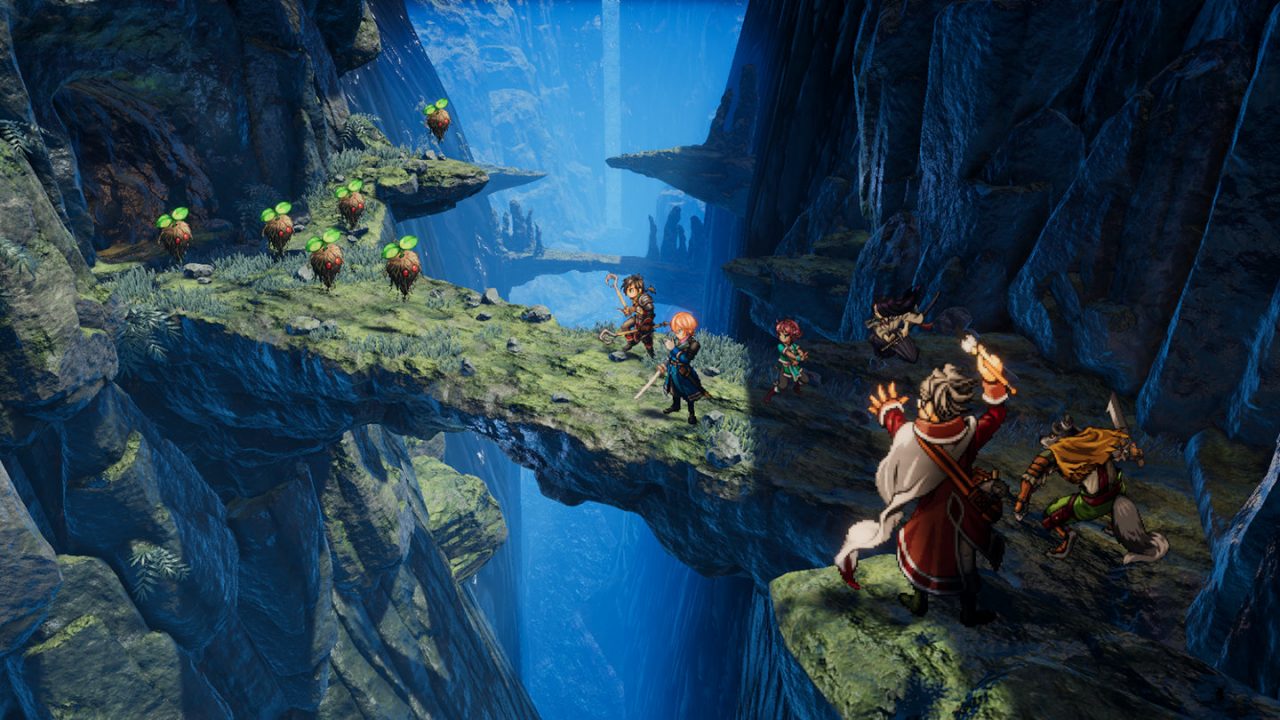
While definitively not a Suikoden game, Eiyuden Chronicle: Hundred Heroes is an upcoming game that follows in the well worn path of ex-Konami devs saying, “if you won’t make another one, I’ll do it myself!” Murayama has returned, adhering to the core concepts of Suikoden with an incredibly successful Kickstarter. While details are still a bit thin on the ground, early videos have shown a game that is a clear successor to Suikoden II. While we’ve got some time before finding out if it lives up to its lofty ambition, Eiyuden Chronicle is the place to be if you want more of this very good thing. Either way, the game is practically begging you to devour its spiritual predecessor before diving in. If Eiyuden Chronicle is successful enough, we might just get a new Suikoden renaissance yet. Hopefully, a Suikoden by any other name will still be just as sweet.

